
To improve movement, each coach and/or athlete must have a firm understanding of the function of the kinetic chain and its relationship and interaction with ground reaction forces and momentum. Once this understanding is developed a logical progression can be implemented to correct and enhance movement skills.
Ground Reaction Forces
The foundation for all movement must reside in the knowledge that movement is completely dependant on the ability of the athlete to utilize and manipulate forces, most importantly the forces that interact with the ground (ground reaction forces GRF).
The ability to powerfully apply force to the ground is crucial to movement, but is only part of the equation. We must also be able to efficiently deal with the force the ground supplies back into the body, because in reality, these are the primary forces that propel and stop the body.
Thanks to Newton's laws of motion, we know that for every action there is an equal and opposite reaction. With respect to movement, this means that when we push against the ground with X pounds of force, the ground is going to push back with that same (X) amount of force (dependant upon the surface).
I call this the FIFO (force in = force out) response. When you further examine the FIFO response you will see that the harder you push into the ground the harder the ground is going to push back. This concept will become increasingly important later when we start to discuss acceleration and deceleration.
During movement we must not only be concerned with the magnitude or amount of force we produce, but also with the direction of application of the force vector. For the purposes of this article, a force vector will be defined as an imaginary line that defines the direction of application of a force. Understanding force vectors will allow us to visualize the forces that we apply and receive.
Note: When you push against the ground with your foot, you are creating a force vector dependant on the direction of push. In response, the ground is going to directly oppose that force vector with its own. It is important to visualize both vectors when we start to analyze the movement.
We must know how to appropriately direct forces to create clean movement. If we misdirect the force we apply to the ground, the resultant reaction will not efficiently help us create or deviate movement.
Although the foot is the point of contact with the ground, it does not determine the force vector created by the push. Rather, one must consider the segment of the leg from the knee down to the foot. It is this segment that will determine the direction of that vector.
One must also consider the center of gravity (COG). The relationship between the location of the COG and the angle of the GRF becomes very important during movement.
Once again we are reminded of Newton's laws of motion. Newton stated that a body will stay in a constant state of motion (or motionless) until it's acted upon by an outside force. Typically what we see (when the body is motion) is that when the force vector created by the GRF opposes the direction of travel of the COG we create a breaking or decelerating moment which disrupts the current state of movement.
This becomes apparent when an athlete tries to rapidly decelerate and they sound like a Clydesdale stomping. They are creating substantial breaking forces to rapidly decelerate their COG. These forces directly oppose the COGs direction of travel.
Likewise, when the force vector angles the same direction as the COG, we are producing propelling or accelerative forces. If you were to analyze a sprinter coming out of the blocks you would notice that they maintain a significant forward lean for 8-12 yards (some more some less).
This forward lean puts the lower shank of the leg at a close angle to the ground. This angle creates a force vector that angles the same direction as the direction of travel of the COG. This means that they are propelling, or pushing the COG forward.
If we examine jumping from a stand still we see that the GRF's are parallel to the COG and perpendicular to the ground. This creates lift or vertical displacement since you are pushing the COG up.
Ground Reaction Forces
The foundation for all movement must reside in the knowledge that movement is completely dependant on the ability of the athlete to utilize and manipulate forces, most importantly the forces that interact with the ground (ground reaction forces GRF).
The ability to powerfully apply force to the ground is crucial to movement, but is only part of the equation. We must also be able to efficiently deal with the force the ground supplies back into the body, because in reality, these are the primary forces that propel and stop the body.
Thanks to Newton's laws of motion, we know that for every action there is an equal and opposite reaction. With respect to movement, this means that when we push against the ground with X pounds of force, the ground is going to push back with that same (X) amount of force (dependant upon the surface).
I call this the FIFO (force in = force out) response. When you further examine the FIFO response you will see that the harder you push into the ground the harder the ground is going to push back. This concept will become increasingly important later when we start to discuss acceleration and deceleration.
During movement we must not only be concerned with the magnitude or amount of force we produce, but also with the direction of application of the force vector. For the purposes of this article, a force vector will be defined as an imaginary line that defines the direction of application of a force. Understanding force vectors will allow us to visualize the forces that we apply and receive.
Note: When you push against the ground with your foot, you are creating a force vector dependant on the direction of push. In response, the ground is going to directly oppose that force vector with its own. It is important to visualize both vectors when we start to analyze the movement.
We must know how to appropriately direct forces to create clean movement. If we misdirect the force we apply to the ground, the resultant reaction will not efficiently help us create or deviate movement.
Although the foot is the point of contact with the ground, it does not determine the force vector created by the push. Rather, one must consider the segment of the leg from the knee down to the foot. It is this segment that will determine the direction of that vector.
One must also consider the center of gravity (COG). The relationship between the location of the COG and the angle of the GRF becomes very important during movement.
Once again we are reminded of Newton's laws of motion. Newton stated that a body will stay in a constant state of motion (or motionless) until it's acted upon by an outside force. Typically what we see (when the body is motion) is that when the force vector created by the GRF opposes the direction of travel of the COG we create a breaking or decelerating moment which disrupts the current state of movement.
This becomes apparent when an athlete tries to rapidly decelerate and they sound like a Clydesdale stomping. They are creating substantial breaking forces to rapidly decelerate their COG. These forces directly oppose the COGs direction of travel.
Likewise, when the force vector angles the same direction as the COG, we are producing propelling or accelerative forces. If you were to analyze a sprinter coming out of the blocks you would notice that they maintain a significant forward lean for 8-12 yards (some more some less).
This forward lean puts the lower shank of the leg at a close angle to the ground. This angle creates a force vector that angles the same direction as the direction of travel of the COG. This means that they are propelling, or pushing the COG forward.
If we examine jumping from a stand still we see that the GRF's are parallel to the COG and perpendicular to the ground. This creates lift or vertical displacement since you are pushing the COG up.

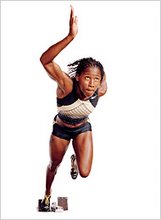
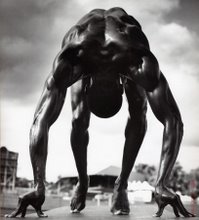


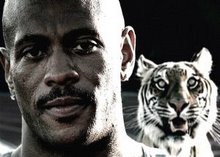
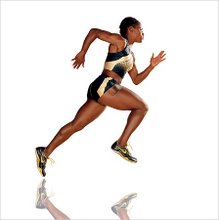
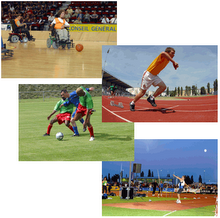
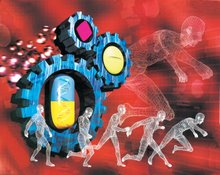

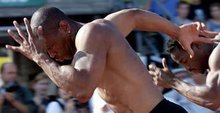


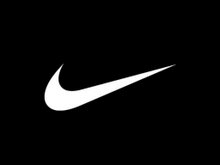



Hiç yorum yok:
Yorum Gönder